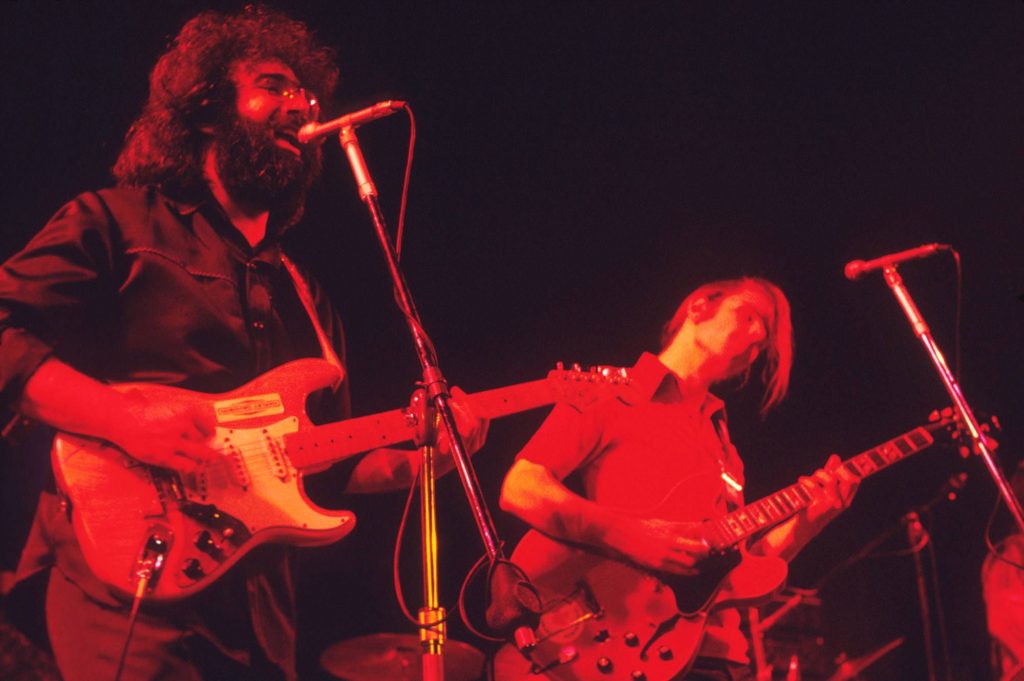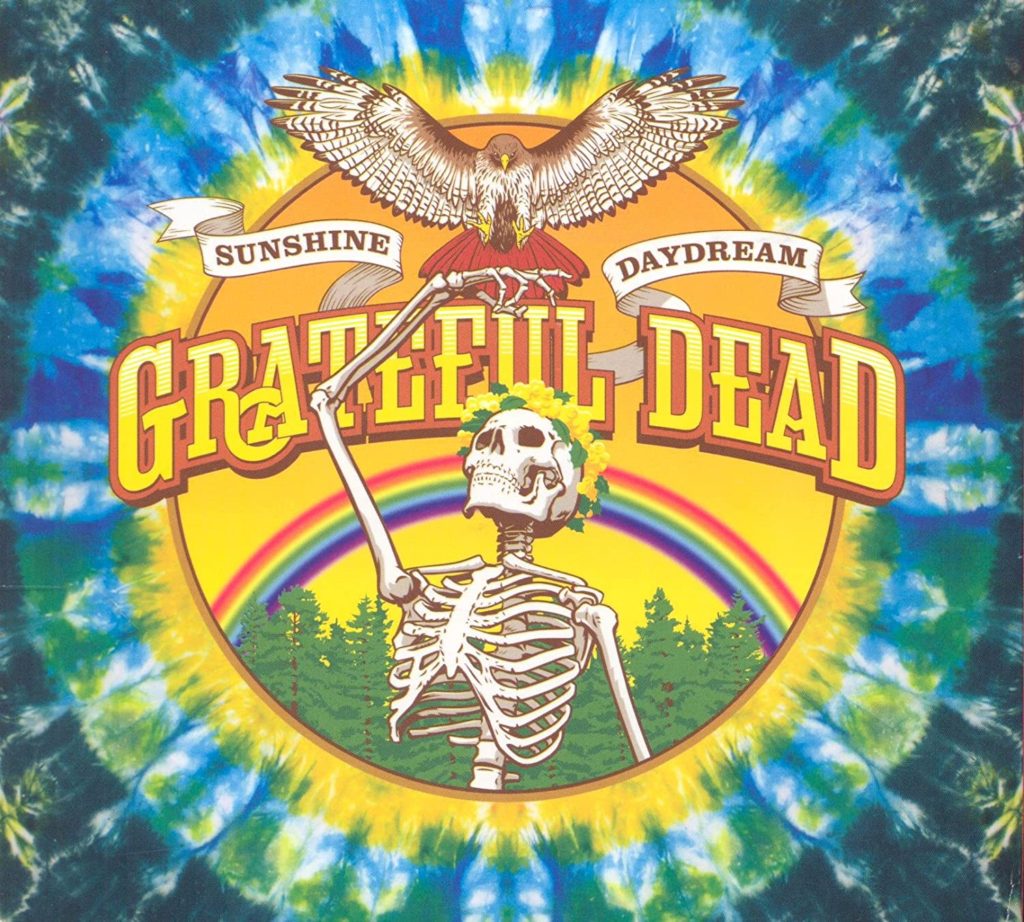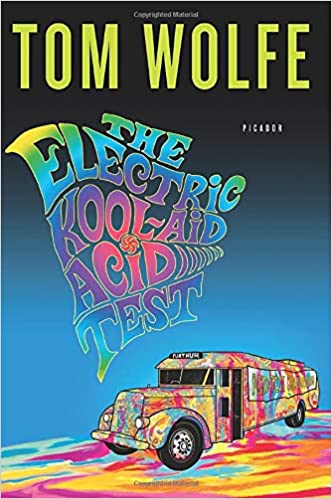- This topic has 0 replies, 1 voice, and was last updated 1 week, 2 days ago by
 chubes.
chubes.
Log in to view. Or, click here to read the blog version of this post (with ads).
-
#56961| April 25, 2024 at 8:28 pm
 chubesHMFICRank: Frozen Foods IslePoints: 10493
chubesHMFICRank: Frozen Foods IslePoints: 10493How to Get Into the Grateful Dead
Published: October 29, 2020
Photo: Michael Putland / Getty Images If you’ve ever wondered why so many people love the Grateful Dead, the most basic answer is because they’re so good that it’s distracting.
The thing about the Grateful Dead is that some of the main reasons why people love the band are the same reasons that make them seem overwhelming to get into, or even that might make some people laugh at Deadheads without even trying to listen to the music.
The band stopped touring decades ago yet you still see the Steal Your Face logo and dancing bears everywhere, perhaps even moreso now than ever, and people still listen to them just as religiously as ever before.
The Grateful Dead played over 2000 concerts in a career spanning 30 years. Most of those concerts were recorded and are available to listen for free online. Everybody knows that the best way to listen to the Grateful Dead is by listening to the live recordings. But where do you even start? Is it all really that good? Why would you want to listen to an entire 3 hour concert?
The truth is that no, not every Grateful Dead show is good. Some of them are so bad at points that they can be hard to listen to. But what you’re hearing is a band that actively opposed putting themselves into a box. They allowed themselves to be human on stage, which to them meant exploring the musical ether with no true rules attached, and sometimes they fell flat on their faces. Instead of trying to replicate the way the songs were played on their albums, the Grateful Dead used their songs as launching pads for creative improvisation.
They didn’t always hit the mark, but I’m telling you that when they did hit the mark they really hit the mark. Sometimes the Grateful Dead get locked into such a good groove that you’ll be forced to sit down for a minute and just do nothing else but listen.
You’ll be in the middle of trying to focus on something and Jerry will draw you in, and before you know it your thoughts are trailing off and you’re back inside the world of the Grateful Dead again. Which feels like being wrapped in a warm blanket, in case you’re wondering.
So, how does one go about getting into the Grateful Dead?
Well, first off, there are many ways to do this, so I won’t claim to know the best way to get into the Grateful Dead. I’m just going to talk about the way that I got into the Grateful Dead, and from there it’s your own trip, man.
1. American Beauty & Workingman’s Dead

While it’s true that the Grateful Dead are far more popular for their live performances than for their studio albums, they released two albums in 1970 that are both considered classics, and they both make for a wonderful first taste of the Grateful Dead.
Those two albums, of course, are American Beauty and Workingman’s Dead. When wondering where to start with the Grateful Dead, you can’t go wrong with either of these two albums.
Workingman’s Dead came first, in June 1970. It was the band’s fourth studio album, but the first one to bring the twang to the formerly psychedelic rock band. With Garcia/Hunter classics like “Uncle John’s Band”, “Dire Wolf”, “New Speedway Boogie”, and “Casey Jones”, Workingman’s Dead brings to the table a much more accessible version of the Grateful Dead, making this record one of two ideal places to begin with this band.

American Beauty was released a few months later, in August 1970. While Workingman’s Dead is good, American Beauty is perhaps even better. The album has so many Grateful Dead classics that today it almost feels like a greatest hits album. Personally, American Beauty was the one that did it for me, as my college roommate kept a copy in his car and it was in constant rotation as we cruised around, which we did often.
American Beauty is sonically very similar to Workingman’s Dead, with folky, rootsy tunes that are easy to digest and appreciate. The most striking difference here is the band’s exploration of vocal harmonies between Jerry, Bob, and Phil. As has been revealed since (check out Amazon’s Long Strange Trip documentary), the band spent a lot of time perfecting the vocal takes on this album. It certainly paid off, as these songs will stick with you, and you’ll probably find yourself coming back to this album again and again.
If you enjoy American Beauty and Workingman’s Dead, the odds are very strongly in favor of you enjoying the Grateful Dead’s live recordings, as well. And that’s where you’re headed next, so buckle up.
2. Cornell 5/8/77

Now, I won’t say that the Grateful Dead’s concert at Cornell University’s Barton Hall on May 8th, 1977 was their best show of all time, but it is widely recognized as being very, very good, and it’s musically very accessible. The Grateful Dead, at times, would take a hard left turn and take the music to a weird place. They didn’t do much of that in the Spring of 1977, but they were for sure dialed up and crushing it night after night for just about the entire tour.
The show on 5/8/77 initially stood out because it was going around in soundboard quality on tape back in the day. Every Deadhead had a copy of this show, and thus it became one of the standout shows in the band’s canon, and eventually it became an official release, which means it’s on Spotify, Apple Music, and every other streaming service in near-perfect quality.
As far as how the show sounds, this one is laid-back, easygoing Grateful Dead. They play many extended jams and seem to be enjoying themselves the whole time, and it’s for the most part musically tight. The whole show is stellar and worth listening to, and for what I think is perhaps the best introduction to the Grateful Dead’s live catalog out there, listen to “Scarlet Begonias” into “Fire On The Mountain”.
“Scarlet > Fire”, as it’s often referred to by fans, is a longtime staple in Grateful Dead live sets. This particular version is extremely smooth and fun, and it starts with a silly banter section where the band tells their fans to take a step back so that everybody has more room to spread out. Then they proceed to rock for 25 minutes straight, flawlessly transitioning “Scarlet” into “Fire” so that you can hardly tell where one song ends and the other begins.
These kinds of transitions are one of the most incredible things about the Grateful Dead, and here you can hear it being done in one of the most perfect executions of their entire catalog. This was one of the first bits of Grateful Dead music that truly turned me on to the band, and it’s one that I keep coming back to and often show to friends in attempt to get them interested in the band as well. It’s just a beautiful thing that I’m extremely glad to have with me in this world.
Read our full review of the 5/8/77 Barton Hall show here.
3. Veneta, OR 8/27/72 (Sunshine Daydream)

Now that you’ve had a rudimentary introduction to the Grateful Dead in concert, we can take things to a more psychedelic level and get you fully on board. The Grateful Dead concert on August 27th, 1972 in Veneta, Oregon is another one of the most famous Grateful Dead concerts, and it makes the aforementioned Cornell show seem pretty vanilla in comparison. This one has the famous “Dark Star” into “El Paso” that is often spoken about among fans as one of the most epic moments in the band’s long history.
Before I get into what this show sounds like, though, I want to give you some more background on the story surrounding the show. This concert was a benefit for the Kesey family creamery in Veneta, Oregon. When I say the Kesey family, I mean Ken Kesey, author of One Flew Over The Cuckoo’s Nest and leader of the travelling band of acid-eating hooligans known as the Merry Pranksters. This concert is a crucial piece of Grateful Dead history. It was filmed in its entirety and in 2013 it was released as a music documentary film called Sunshine Daydream.
The show took place on a very hot day in late August, when the band was fresh off their Europe ’72 tour, which is also one of the most famous eras for the band. They crushed it and rocked a 32-minute rendition of their trippiest song, “Dark Star”. The song is basically freeform jazz led by Jerry Garcia into some really psychedelic territory, only to come out into a midwestern country vibe with “El Paso”. It’s psychedelic weirdness at its finest and the band is really on for the whole show.
Other major standouts from this show are “Sugaree”, which features perhaps some of Jerry Garcia’s best-ever singing (though Phil is a bit out of tune), and “Bird Song”, which is timed beautifully and wrapped into a perfect little package. Finally you’ve got “China Cat Sunflower” into “I Know You Rider”, which is basically the “Scarlet > Fire” of this earlier era of Grateful Dead concerts.
Bonus: Read The Electric Kool-Aid Acid Test

Since the Veneta concert brings the Ken Kesey connection, it presents an opportunity to take things full circle and connect this concert to the band’s early roots in the late 60s in San Francisco. Tom Wolfe’s book The Electric Kool-Aid Acid Test documents this era, and while it is not exactly about the Grateful Dead, but rather about Kesey and the Merry Pranksters, the Grateful Dead were part of Kesey’s posse and are heavily featured in the book.
The Electric Kool-Aid Acid Test tells about the “acid tests” of the 60s, where the Grateful Dead were the house band. The acid tests were basically large parties where everybody took LSD and went wild for an entire night. It fueled the counterculture movement of the 1960s and helped shape the sound of the Grateful Dead, as their psychedelic improvisation has roots in the exploratory mental state they found themselves in after ingesting Kesey’s psychedelic kool-aid.
It’s a fantastic book and highly recommended reading for anybody interested in this countercultural movement that was started by Kesey and perpetuated to a large scale by the Grateful Dead. It’s part of a backstory that is secondary to the music, but learning about it adds depth to the experience of listening to the Grateful Dead, which at times certainly does feel like a very communal experience, even if you’re listening alone.
4. Take The Deep Dive

After you listen to American Beauty, Workingman’s Dead, 5/8/77, and 8/27/72, you should have a base-level knowledge of what you like best about the Grateful Dead, and thus you’ll be prepared to go off in any number of different directions.
You could go earlier, into the gritty live recordings of the 60s when the Dead were still cutting their teeth and figuring out what works best for them. Or you could go later, into the dark depths of the 80s when the band was much more hit or miss, and Jerry’s health became a thing of concern. You could hit the late 80s to early 90s, when the band reached their final peak and had some of their most transcendent evenings. There’s not much to recommend after 1992, but hey, you do you.
No matter where you go next, the Grateful Dead are a band that has the potential to grow on you and help you through some confusing times, such as the great COVID-19 pandemic of 2020. There is a never-ending supply of Dead and Dead-adjacent music out there, and an entire subculture surrounding it that will happily accept you as one of its own. All you’ve gotta do is listen to the music and you’ll find your own path, and before long you’ll be wearing tie-dye and letting your freak flag fly.
To help you out, though, some of my favorite Grateful Dead concerts, other than the ones mentioned above, are as follows: 3/29/90, 10/12/84, 12/31/78, and 5/28/77. There are many more great ones, and what is my favorite now may not remain as such forever.
Which leads me to….
Bonus: Headyversion.com
Once you have a handful of Grateful Dead songs that you know you enjoy, one possible way to explore the band is by finding shows that include those songs and listening to the entire show containing it. Headyversion.com is a great resource for finding out which shows are worth listening to, as it’s a Deadhead-run website that allows users to upvote versions of Grateful Dead songs that they think are the best. The site also links to each show on archive.org so you can click straight through to listen when you find out about a new version of a song that you might enjoy.
- You must be logged in to reply to this topic.
Users Currently Online: 1
Most Ever Online: 8 on 02/06/2024
Total Members: 197